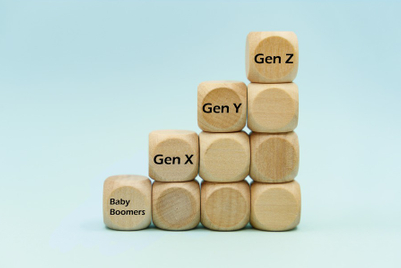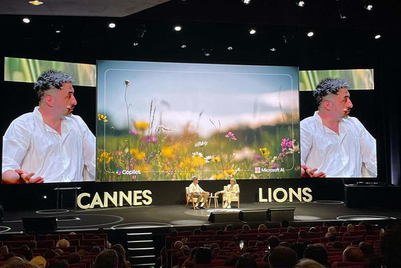
With consumer behaviours now radically changing and brand loyalties very much in question, marketing professionals are straining to spot new long-term trends amid the chaos.
Some strong clues have indeed emerged; for example, researchers have found that since the beginning of the pandemic, more than two-thirds of millennial and Gen Z consumers have purchased or used products from new brands. Fewer than 50% of older consumers have done the same. Based on the weight of their demographic and their growing spending power, it’s especially important now to get to know millennials and Gen Z: their behaviours may be the ‘new normal’ for decades to come.
Broadly speaking, the groups’ similarities outweigh their differences. Both seek ‘meaningful engagement’ with businesses—things like community activities and online games—and are keen on brand loyalty programmes. They are also bursting with new ideas for digital media. Both can be successfully engaged within a vibrant community experience. A good example is Bilibili, a Chinese video app.
With approximately 80% of its users aged between 18 and 35, Bilibili’s community is younger than those of equivalent apps in China, and its users’ consumption habits and socioeconomic characteristics represent a broad spectrum. According to Bilibli's Q3 2020 figures, on average, users spend 81 minutes a day on the platform, each contributing to an average of 1.3 billion videos viewed per day, and an average total of 5.5 billion user interactions per month.

Just how does Bilibili hold their interest? Features are one reason: they enable users to respond to live videos in a real-time scrolling chat. Bilibili also organizes online/offline/hybrid performances such as New Year’s Eve parties, and they’ve even developed dramas and documentaries. It adds up to an addictive dynamic ecosystem that goes far beyond viewing videos, and invites a high degree of engagement in a very ‘sticky’ community.
Building communities from events
For marketing professionals, the question is how to build that kind of engaging, personal, creative community from brand activations – whether physical, virtual or hybrid. Some solutions can be found in recent activation projects in China, where both live and virtual events are starting to resume. For markets still subject to prohibitions on physical gatherings, these examples may offer a useful preview of a post-COVID new normal shaped by millennial and Gen Z consumers.
1. Diversify your content and encourage interactivity
According to research, 60% of millennials and 53 % of Gen Z prefer events that offer experiential elements, a preference much higher than in older age groups.
More than ever nowadays, ‘experiential’ tends to mean ‘immersive’ and ‘diverse’: giving the audience a choice of how and how much they experience. But that doesn’t mean trying to please everyone, all the time, on every imaginable platform. What it does mean is developing a coherent content strategy for a well-defined target audience, and crafting content for the most appropriate platforms.
Encouraging interaction will make things even more compelling. Personal exchanges are hard to ignore or disengage from, especially when the dialogue may offer valuable takeaways.
Changing the game: Li-Ning Pop-up Store
Inspired by spaceships, this design was successively transformed to reflect themes of ‘Running Culture’, ‘E-sports’, ‘Basketball Culture’ and ‘Line Friends’, each with its own activities.

‘Running Culture’, for example, combined pop culture with nostalgia, with running shoe fittings, retro arcades, live graffiti art performances, new folk and electronic music performances heating up the venue. For ‘Basketball Culture’, the store became an exclusive party venue for slam dunk players. Participants could meet basketball stars, and even experience the thrill of competing with them on court.
Music and more: JD mobile phone promotional campus concert
JD aimed to capture the hearts of millennials and Gen Z with a concert at Chongqing University that offered more than music. The event also included a range of activities to help the audience engage with JD mobile phones and connect with the brand in general.

2. Gamify
Gamification has already proved effective in keeping audiences fresh, engaged and enthusiastic. The technique also ties right into Gen Z’s love of diverse activity and interaction, and can be a major factor in building a community.
In another survey, 34% of Gen Z respondents expressed a preference for ‘creative opportunities to engage’ when asked what type of content they wanted from brands. This points to great possibilities for livestream and virtual events that present messages in entertaining, surprising ways.
A gamified virtual forum: Digital Entertainment Leadership Forum
The Forum ensured maximum participant access by being divided into complementary physical and virtual programmes, running for two days and two months respectively. Diverse content, tournaments, interactive games and a rewards programme helped maintain a high level of engagement and encouraged active participation.
A notable aspect of the event’s ‘gamification’ was a ‘Gear Hunt’ mini game. By clicking on gaming gear icons which popped up randomly on the platform, participants could earn reward points while minimising their idle time.
3. Stay current with technology
A survey revealed that 64% of millennial respondents and 49% of those from Gen Z said they would revisit an experiential event. Now as ever, technology is essential to creating these experiences. What distinguishes millennials in this respect is their status as ‘digital natives’. They grew up with technology, and it remains deeply ingrained in their adult lives. Therefore, events can and should use tech to make them feel at ease, interested and engaged. The newer and more novel the tech, the more impressed they will be.
Vitamin AR: TruLyfe’s ‘Genie in a Bottle’ for new customers
Outside China too, brands are leveraging different technologies to connect with a young audience. Supplement brand TruLyfe reached out to a new generation of customers with ‘Genie in a Bottle’, an online experience offering visitors advice from a registered dietician in augmented reality (AR) form. The experience starts when visitors to the brand’s online store scan a QR code found on purchased bottles of supplements. The dietician’s 3D hologram then appears on the bottlecap, talking them through the product’s benefits and nutritional information. The ‘Genie in a Bottle’ experience is powered by NexTech’s ‘ARitize’ app.
Millennials and Gen Z are different – like everyone else
When planning digital event experiences or campaigns with Millennials and Gen Z in mind, what is important above all is to heed the generalisations about them loosely. Not all Baby Boomers are technology averse, not every ‘digital native’ is obsessed with social media. They’re individuals.
Ultimately, every ‘millennial/Gen Z’ element in your digital event or activation should take this into account. Engagement technologies that are too focused on one set of interests may repel anyone who slightly differs.
The takeaway is: don’t ignore the individual. Offer more than one reason to enjoy your event.
Gregory Crandall is senior vice-president of the global activation team at Pico.



.jpg&h=334&w=500&q=100&v=20250320&c=1)


.png&h=334&w=500&q=100&v=20250320&c=1)




.png&h=334&w=500&q=100&v=20250320&c=1)





.png&h=268&w=401&q=100&v=20250320&c=1)
.png&h=268&w=401&q=100&v=20250320&c=1)

